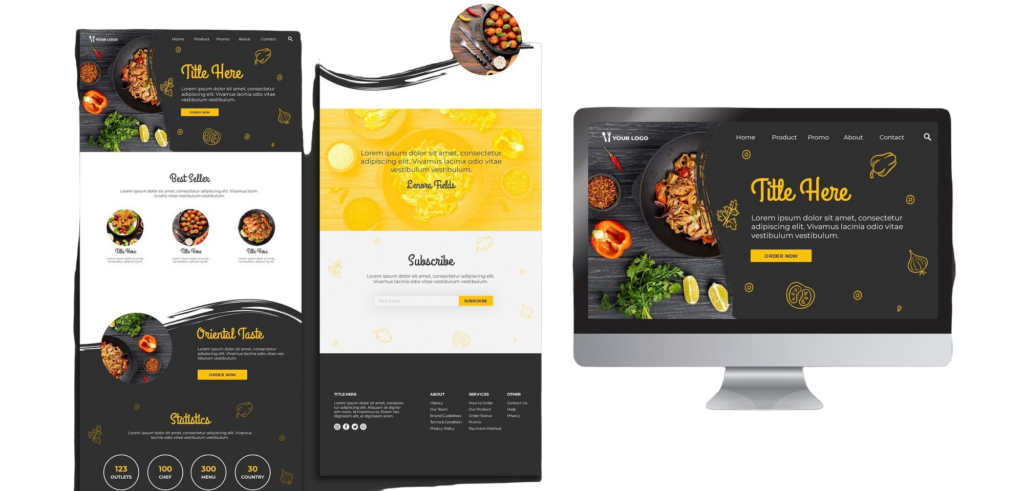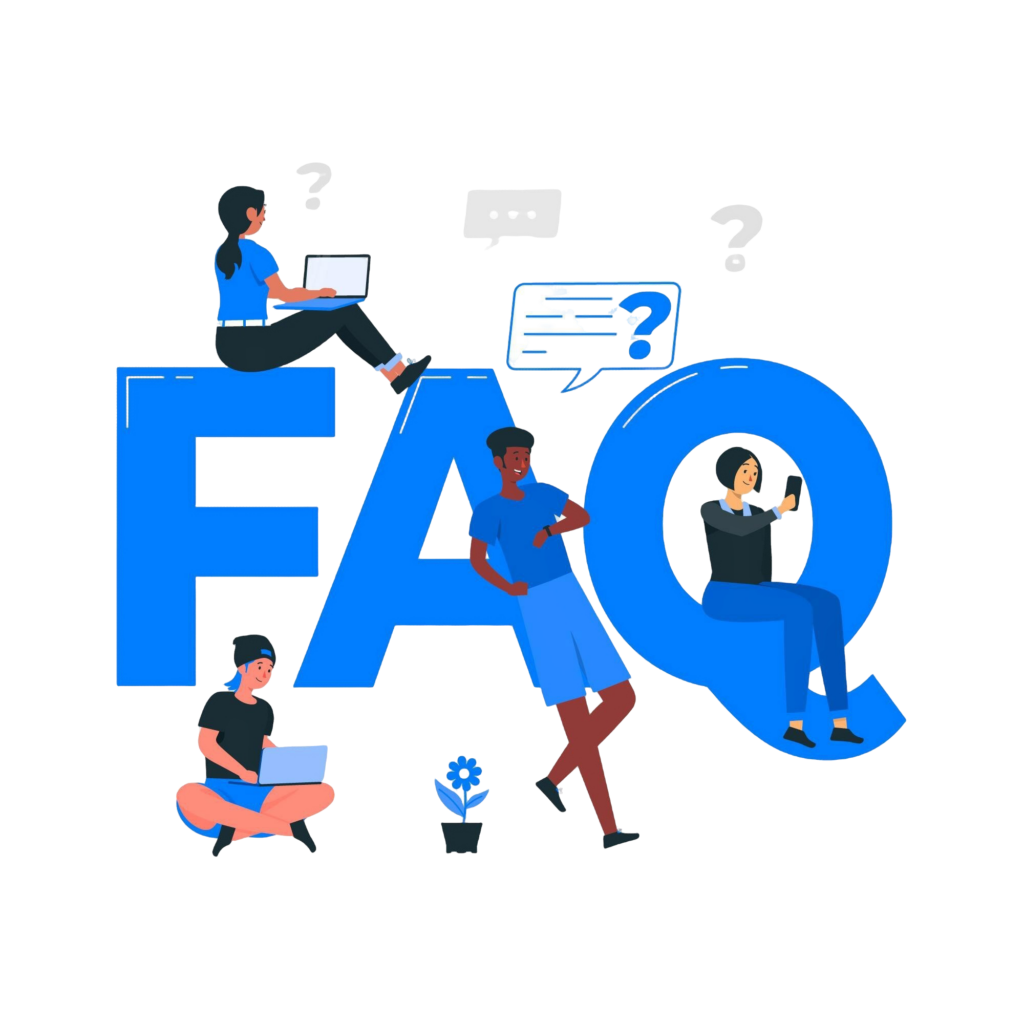In the digital age, a website is essential for establishing an online presence, whether it is for a small business owner, a creative professional, or an individual looking to share a passion with the world. But if you’re building a website for the first time, the task can be overwhelming. Where do you start? What do you need to consider? And how can you ensure that your website is not only functional but also successful?
Planning a website is not something so difficult; you will come up with a site that effectively serves your goals and satisfies your audience needs. We have put together this guide on how to plan, design, and launch your very first website. We have also answered some of the most frequently asked questions raised by beginners about developing websites, as shared by our web development company in the UK.

1. Knowing Your Website’s Purpose
Before you dive into the details of website design and content creation, it is paramount to first define the purpose of your website. What are the main goals your website to achieve? Understanding the goals and objectives of your website will guide you in making key decisions about its structure and design and help you measure its success once it’s live.
Define the Purpose
Ask yourself: What is the main goal of my website? Is it to sell products, showcase a portfolio, share blog posts, or provide information about your services?
Who is my target audience? Understanding the demographic of your visitors whether they’re potential clients, customers, or followers will influence the design, content, and functionality of your website.
What action do I want visitors to take? Do you want them to make a purchase, sign up for a newsletter, download a resource, or simply browse your content? Once you clarify the purpose of your website, everything else such as content, design, and navigation will follow naturally. If your goal is to sell products, for example, you’ll need e-commerce features; if you’re building a portfolio, the focus will be on high-quality visuals and ease of navigation.
2. Choosing the Right Domain Name
Your domain name represents your website’s address on the internet, so it becomes very important to choose something that reflects your brand, is easy to remember, and simple to type.
Tips When Choosing a Domain Name
Use short and memorable: try to get a domain easy to spell, pronounce, and remember. Avoid complex words, long phrases, or numbers that might confuse people.
Reflect your brand or purpose: Your domain should give visitors an immediate idea of what your website is about. If possible, incorporate keywords that are relevant to your industry or business. Steer clear of using hyphens or numbers, as they can be confusing and make your domain harder to remember.
Consider your brand identity: Your domain name is an extension of your brand. Keep it professional, creative, or personal.
Use the appropriate extension: Of course, you’ll find the most familiar and common domain extension is.com. Use.net, .org, or niche-specific extensions such as. shop or. design for your website when it will make sense to use them.
Once you’ve settled on a domain name, use a domain registrar service like GoDaddy, Name cheap, or Google Domains to check if it’s available. If your first choice is taken, try modifying it slightly or consider using a different extension.
3. Choosing a Website Platform
This is perhaps one of the most crucial decisions you’ll make during the website planning process. There are numerous options, and each of them has their strength and weaknesses. Some of them are mentioned below:
Website Platforms to Consider:
WordPress: WordPress is one of the most widely used content management platforms for creating a website. It has hundreds of customizable options, thousands of themes and plugins, and can be used for anything from blog posts to business websites. There’s WordPress.com that makes things much easier for new users, but then there is WordPress.org that has so much flexibility, though one must take care of one’s hosting.
WIX: It is a drag-and-drop website builder that’s user-friendly and perfect for beginners. You do not need to know how to code to create a professional-looking website with Wix. It’s best for smaller websites and portfolios.
Squarespace: Squarespace is another drag-and-drop website builder that is known for its elegant and professional design templates. It’s good for creatives, photographers, and small businesses.
Shopify: Shopify is a good option if you plan to build an eCommerce site. It’s made with the intent of helping you sell your products online, with inventory management, payment processing, and marketing tools built in.
Weebly: It is similar to WIX and Squarespace, It is a drag-and-drop website builder. Suitable for small businesses and personal sites, it’s a breeze to use.
4. Structuring Your Website’s Structure
Well-structured website structuring is what provides the user experience with its best services. The site’s structuring must be logical so that navigation is simple, helping visitors quickly locate the information needed.
Key Pages Your Website Must Contain:

Home Page: The page which visitors first view so should tell them clearly what your website is about and what you offer. It should be aesthetically pleasing with a strong CTA encouraging people to look around.
About Page: This page will introduce you or your business explaining who you are, what you do, and what makes you unique.
Contact Page: This is how visitors can easily get in touch with you. You can include your email address, phone number, social media links, or a contact form.
Blog or Resource Pages (optional): If you are going to share some regular content or articles, then it is a good idea to have a blog section. It also helps you with SEO as it provides new content that search engines can index.
Product/Service Pages: If you sell products or services, each product and service needs a dedicated page with extensive details, and a strong call-to-action.
Privacy Policy & Terms of Service: You’ll need these for legal compliance, especially if you are collecting any type of user data (email, payment, etc.).
Building Your Sitemap
A sitemap is a graphic representation of your website’s structure, showing how pages link to one another. It helps you organize your content and plan a user-friendly navigation system. You can either use online tools or just draw your sitemap on paper.
5. Designing Your Website
The design of your website determines its success. A good-looking site is one that’s easy to navigate, beautiful, and works on all devices. Remember that your design should be in line with your website’s goals and what the target audience would prefer.
Design Principles to Consider
Simplicity: A website should be simple. No cluttered pages or heavy visual elements. It often turns out best if kept to a minimum.
Consistency: Use a consistent color scheme, fonts, and layouts across all pages. Such consistency creates a cohesive feel for the users.
Responsiveness: Your website should look great on any device, that is, whether it is to be viewed on a desk top, tablet, or smartphone. Most website builders also offer responsive templates, make sure to test your website on different screen sizes.
Readability: Select easily readable fonts and ensure that the text contrast with the background. Your layout should draw the eye of the user through sections.
Call to Action (CTA): Ensure that your CTAs are noticeable. Whether it is “Shop Now,” “Contact Us,” or “Learn More,” your CTAs should easily be spotted and prompt action from the users.
Visual Elements:
Typography: Use 2-3 fonts that are legible and suitable for your brand.
Colors: Use a color palette that reflects your brand identity and enhances readability.
Images: High-quality images are very important to engage the visitors. Use photos or graphics that represent your brand well and avoid using too many stock images that may look generic.
6. Building and Launching Your Website
Once you have planned your structure and design, it is time to start building your website. The process will vary depending on the platform you are using, but the basic steps are generally the same.
Steps to Build Your Website:
Choose a hosting provider (if needed): If you’re using WordPress, you’ll need a hosting provider to store your website files. Some popular hosting providers include Bluehost, Site Ground, and HostGator.
Install your platform: Install your website builder by following the platform’s instructions (e.g., WordPress, WIX , or Squarespace).
Select a theme or template: Choose a theme that appeals to your design preferences and the needs of your business. Customize it with your branding, colors, and content.
Add your content: Add text, images, videos, and other content to your website pages. Make sure to proofread everything and ensure the content fits with your website’s goals.
Test your website: Before launching, test your website on different devices and browsers to ensure it looks and functions correctly.
Publish your website: Once your testing completed published your website.
Frequently Asked Questions (FAQs) on Planning Your First Successful Website

1. How much does it cost to build a website?
The cost of building a website can vary depending on the platform you choose, the complexity of the website, and whether you choose to hire a professional. Some platforms, like WordPress.com, WIX, or Weebly, offer free plans with basic features. However, for a more professional look and functionality, you may need to pay for a domain name, hosting, and premium templates or features. For example:
Domain name: $10-$20 per year
Hosting: $3-$15 per month (depending on the provider)
Subscription to website builder (if needed): $12-$40 per month for premium features
Design and development (if hiring a professional): $500-$5,000+
If you are doing everything yourself using website builders, it can be relatively cheap, with costs between $100 to $500 per year.
2. How long does it take to build a website?
The time it will take to create a website is also determined by its complexity and your level of familiarity with website-building tools. A simple personal website or portfolio could be set up in a matter of hours using a drag-and-drop website builder. More complex websites, like an e-commerce site or a website requiring a custom design, may take weeks or months, depending on whether you are hiring a designer or developer.
It will take much longer if you are just a beginner in web design. However, with pre-designed templates and themes, your website will be ready and up within a few days.
3. Do I have to know how to code to make a website?
You do not need to know how to code to make a website if you are using a website builder such as WIX, Squarespace, or WordPress with pre-designed themes. You can drag and drop elements, fill in text, and upload images without any programming skills.
4. What is the best platform for building a website?
The best platform are WIX, Squarespace, and Weebly are all user-friendly, feature-rich, and allow for easy drag-and-drop design.
5. How do I ensure my website is mobile-friendly?
To ensure that your website is mobile-friendly, choose a responsive design. Most modern website builders, such as WordPress, WIX, and Squarespace, offer responsive templates, meaning they will automatically adjust to fit different screen sizes.
Conclusion:
Building your first website might seem like a monumental task, but with careful planning and the right tools, it can be an incredibly rewarding experience. From defining your goals and choosing the right platform to designing a user-friendly and responsive site, every step in the process plays a crucial role in your website’s success.
First, define the purpose of your website and the target audience you are targeting. Select a domain name that is reflective of your brand, pick a platform that fits your needs, and make sure your website is well-organized and visually appealing. Regardless of whether it’s a personal blog, online portfolio, or business website, you must consider user experience, mobile optimization, and SEO at every step.
Last, keep in mind that a website is never really “done.” There will always be changes, new content, and promotion of it for sustained site success over the long term. With persistence, focus on the details, and a defined plan, you can have a website that is not only aesthetically pleasing but also achieves its goals and delivers meaningful results, as demonstrated by our web design company in the UK.

